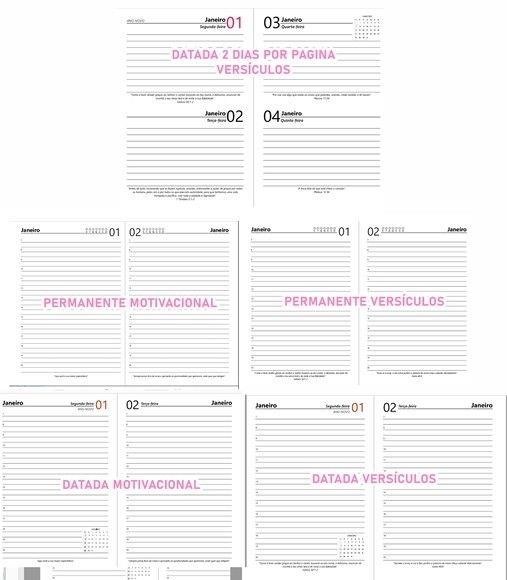the summer i turned pretty free pdf
The Summer I Turned Pretty⁚ A Comprehensive Guide to the Series
Discover the captivating world of Jenny Han’s “The Summer I Turned Pretty” trilogy. Explore where to find free PDF downloads, various formats, and the complete summer series. Dive into a compelling coming-of-age story.
Where to Find “The Summer I Turned Pretty” PDF
Finding a free, legal PDF of “The Summer I Turned Pretty” can be tricky. While many websites offer downloads, caution is advised. Unauthorized distribution infringes on copyright. Legitimate sources for the ebook include online retailers like Amazon Kindle, Barnes & Noble Nook, and Google Play Books. These platforms offer both purchase and rental options. Public libraries often have digital copies available through their online resources. Check your local library’s website or app. Remember, respecting intellectual property rights is crucial. Supporting authors by purchasing their work ensures continued creation of fantastic stories. Consider borrowing from a library or using a legitimate ebook platform for a legal and ethical reading experience. Always verify the legitimacy of any website offering free downloads to avoid malware or viruses. Prioritize safe and legal access to your favorite books. Enjoy the heartwarming tale of Belly’s summers at Cousins Beach!
Availability of the Book in Different Formats
Jenny Han’s “The Summer I Turned Pretty” is widely available in various formats to suit diverse reading preferences. Beyond the traditional paperback and hardcover editions, you can find it as an ebook for e-readers like Kindle and Nook. These digital versions often include convenient features such as adjustable font sizes and built-in dictionaries. Audiobook versions, narrated by professional voice actors, are also readily accessible through platforms like Audible and Spotify. These allow for listening during commutes or other activities. The complete trilogy is available in boxed sets, a delightful option for collectors or those wanting the entire series. Some retailers may also offer special editions with unique cover art or bonus content. This broad range of formats ensures that fans can enjoy the captivating story in their preferred way, making it accessible to a larger audience. Consider the format that best suits your reading style and technological capabilities.
The Trilogy⁚ Exploring the Complete Summer Series
Jenny Han’s “The Summer I Turned Pretty” isn’t just a standalone novel; it’s the captivating opener to a beloved trilogy. Following Isabel “Belly” Conklin’s journey, the series chronicles her summers at Cousins Beach, filled with romance, friendships, and self-discovery. The second book, “It’s Not Summer Without You,” deepens the emotional complexities of Belly’s relationships with the Fischer brothers, Conrad and Jeremiah, exploring the challenges of love and loyalty. The final installment, “We’ll Always Have Summer,” brings the trilogy to a poignant conclusion, resolving the central love triangle and showcasing the enduring bonds of friendship amidst life’s changes. Each novel offers a unique perspective on summer’s fleeting magic and the lasting impact of adolescence, creating a cohesive and deeply resonant narrative. Readers often appreciate the character development and emotional depth across the three books.
Plot Summary and Key Characters
Follow Belly’s unforgettable summers at Cousins Beach, her evolving relationships with Conrad and Jeremiah, and the idyllic beach setting that shapes her life.
Belly’s Unforgettable Summer
Each summer, Belly escapes to Cousins Beach, a cherished haven where she spends time with her mother and her best friend, Taylor. This isn’t just any beach; it’s a place brimming with memories and the anticipation of seeing the Fisher brothers, Conrad and Jeremiah, the sons of her mother’s lifelong best friend. But this particular summer, the summer she turns sixteen, is different. It’s a summer filled with firsts, heartbreaks, and the bittersweet realization that childhood friendships and summer romances are fleeting, leaving lasting imprints on her heart. The beach house, a symbol of stability and comfort, becomes a stage for Belly’s emotional journey, a backdrop against which she navigates the complexities of love, loss, and self-discovery. As she falls deeper into the throes of a complicated love triangle, she must grapple with her own identity amidst the shifting sands of adolescence. The beach, once a simple escape, transforms into a crucible where Belly forges her path to adulthood.
The Love Triangle⁚ Conrad and Jeremiah
At the heart of “The Summer I Turned Pretty” lies a captivating love triangle involving Belly and the Fisher brothers, Conrad and Jeremiah. Conrad, the brooding and mysterious older brother, captivates Belly with his intensity and unspoken emotions, creating a magnetic pull that she finds both alluring and frustrating. Jeremiah, on the other hand, is the charming and playful younger brother, offering Belly a sense of comfort and carefree fun. Their contrasting personalities create a compelling dynamic, forcing Belly to confront her own desires and expectations in love. The tension between the brothers adds another layer of complexity, hinting at underlying sibling rivalry and unspoken feelings. This central conflict drives the narrative, forcing Belly to make difficult choices and confront the emotional turmoil of young adulthood. The reader is drawn into their world, questioning who Belly should choose and how her decisions will shape her future.
Cousins Beach⁚ The Setting
Cousins Beach isn’t just a location; it’s a character in itself, a vibrant backdrop to the unfolding drama of “The Summer I Turned Pretty.” More than just sand and sea, it represents a haven for Belly, a place where childhood memories intertwine with the burgeoning complexities of adolescence. The beach house, a symbol of enduring summer traditions and family ties, becomes a stage for both joyous moments and heartbreaking revelations. Its familiar sights and sounds—the crashing waves, the salty air, the warm sun—become inextricably linked to Belly’s emotional journey. The beach’s beauty serves as a stark contrast to the internal conflicts and romantic entanglements that dominate her summers. It’s a place where she can both escape and confront her feelings, a space where the weight of unspoken words hangs heavy in the humid air, mirroring the unspoken desires and tensions that simmer beneath the surface of her relationships. The setting’s evocative descriptions transport the reader to the heart of Belly’s world, making the story all the more immersive and emotionally resonant.
Author and Background
Learn about Jenny Han, the author behind the beloved “Summer I Turned Pretty” series, and the inspiration behind this captivating coming-of-age story.
Jenny Han⁚ The Author’s Other Works
Jenny Han, the gifted author behind the enchanting “Summer I Turned Pretty” series, is celebrated for her poignant and relatable portrayal of teenage life. Beyond this beloved trilogy, Han has crafted other captivating narratives that resonate with young adult readers. Her breakout success, “To All the Boys I’ve Loved Before,” was adapted into a popular Netflix film series, showcasing her knack for weaving heartfelt stories about first love, friendship, and self-discovery. This successful adaptation further solidified her status as a leading voice in young adult literature. Han’s writing is characterized by its authentic depiction of teenage emotions, the exploration of complex relationships, and the inclusion of diverse characters, making her books relatable and engaging for a wide audience. Her ability to capture the nuances of adolescence, from the exhilarating highs to the heartbreaking lows, resonates deeply with readers, establishing a strong connection between her characters and their experiences. Beyond “To All the Boys” and “The Summer I Turned Pretty,” explore her other works to discover more of her captivating storytelling.
Inspiration Behind the Story
Jenny Han’s “The Summer I Turned Pretty” draws inspiration from the universal experience of cherished summer memories and the transformative power of adolescence. The novel captures the essence of those idyllic summer days spent at the beach, filled with sun-kissed skin, laughter, and the bittersweet pangs of first love. The setting of Cousins Beach, a fictional haven, embodies the nostalgic charm of a timeless summer escape. Han masterfully weaves together elements of personal experience and keen observation to create a narrative that resonates with readers on a deeply emotional level. The story’s central theme revolves around the complexities of young love, exploring the intensity of first crushes, the uncertainties of relationships, and the bittersweet ache of unrequited affection. The characters’ emotional journeys, marked by both joy and heartbreak, serve as a poignant reflection of the universal experiences that shape us during our formative years. Han’s ability to capture the essence of summer romance and the emotional turbulence of adolescence makes “The Summer I Turned Pretty” a timeless and relatable story.
Adaptations and Popularity
The “Summer I Turned Pretty” novels have achieved significant popularity, leading to a successful Prime Video series adaptation and widespread critical acclaim.
The Prime Video Series
Jenny Han’s beloved “Summer I Turned Pretty” book series has been adapted into a popular television series on Prime Video. The show faithfully captures the essence of the books, bringing the characters, settings, and emotional complexities to life on screen. Fans of the books and new viewers alike have praised the series for its authentic portrayal of teenage romance, friendships, and the bittersweet pangs of growing up. The show’s success is a testament to the enduring appeal of Han’s storytelling and the power of the original novels to resonate with audiences. The visual representation of Cousins Beach, the idyllic summer setting, adds another layer of charm, enhancing the immersive viewing experience. The actors chosen to portray the main characters have been widely lauded for their performances, capturing the nuances of Belly, Conrad, and Jeremiah’s complex relationships. The series has garnered a devoted following, generating significant online buzz and solidifying its place as a must-watch for fans of young adult fiction and romantic dramas. The show’s success has undeniably boosted the popularity of the books, introducing a new generation of readers to Han’s captivating storytelling.
Critical Acclaim and Reader Response
Jenny Han’s “The Summer I Turned Pretty” has garnered widespread critical acclaim and enthusiastic reader response, solidifying its status as a beloved young adult novel. Critics praise Han’s evocative writing style, her ability to capture the complexities of teenage emotions, and the relatable portrayal of friendships and romantic relationships. The novel’s exploration of first love, heartbreak, and self-discovery resonates deeply with readers, who connect with Belly’s journey of self-acceptance and navigating the complexities of a love triangle. The book’s nostalgic summer setting and charming characters create an immersive reading experience. Many readers have described the series as a comfort read, appreciating its warmth, humor, and emotional honesty. Online reviews and discussions highlight the book’s impact, with readers sharing their personal connections to the story and its characters. The consistent positive reception across various platforms underscores the enduring appeal of “The Summer I Turned Pretty,” solidifying its place as a modern classic in the young adult genre. The success of the book has also led to a thriving fan community, further cementing its popularity.


